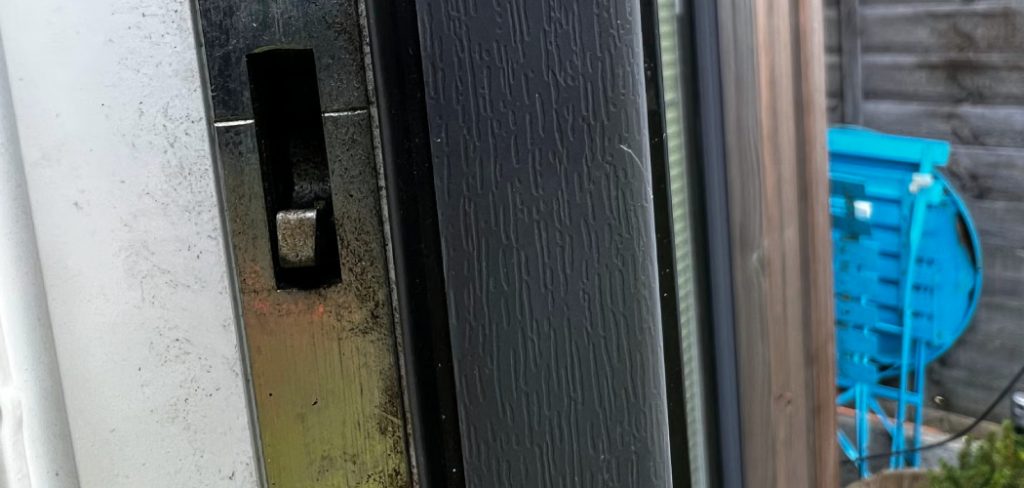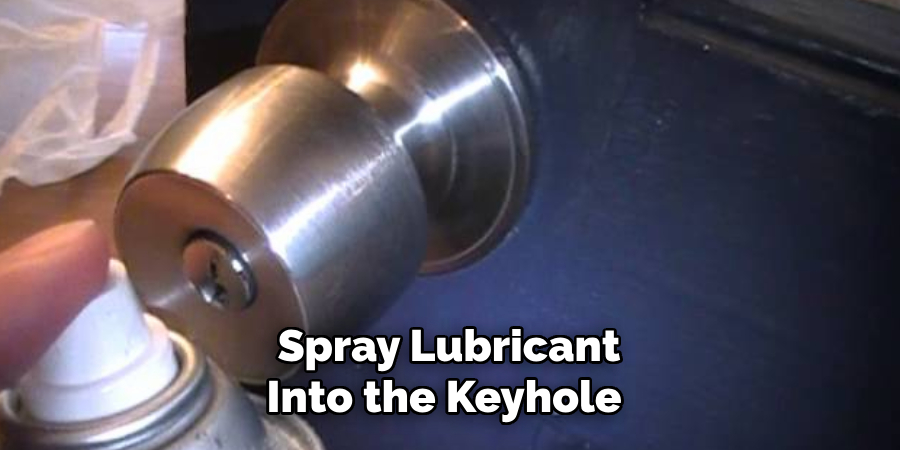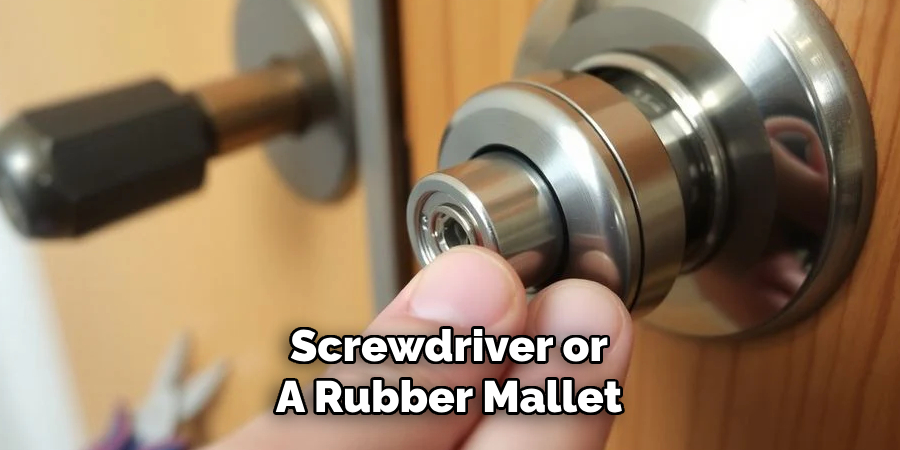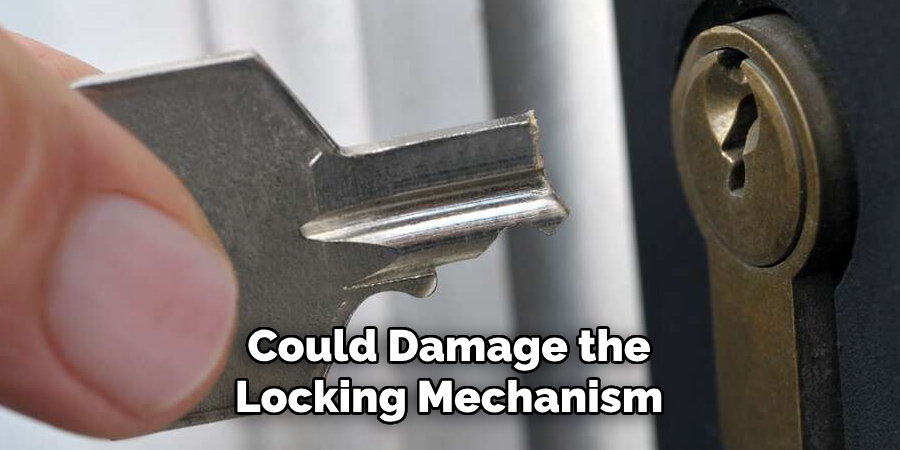A lock cylinder can become stuck due to dirt, debris, rust, or lack of lubrication, leaving you frustrated and unable to access your door. Fortunately, there are simple and effective methods to address this issue without needing professional assistance.

This guide on how to unstick a lock cylinder will walk you through the steps to unstick a lock cylinder safely and efficiently, saving you time and effort. Whether you’re dealing with a house lock, car lock, or padlock, these tips will help restore its functionality in no time.
Why is My Lock Cylinder Stuck?
Before jumping into the solutions, it’s important to understand why your lock cylinder may be stuck. The most common causes are:
Dirt and Debris Buildup:
Over time, dust, dirt, and other particles can accumulate inside the lock cylinder, causing it to become sticky and difficult to turn.
Rust:
Exposure to moisture or lack of proper lubrication can lead to rust formation, making the lock cylinder stiff and unresponsive.
Key Misalignment:
If the key is not inserted properly or is bent, it can cause the lock cylinder to get stuck. Additionally, if the key has worn down over time, it may not fit correctly into the lock, leading to a jammed cylinder.
Now that you know some of the common causes of a stuck lock cylinder, let’s move on to how you can fix it.
Materials Needed
Graphite Powder or Spray Lubricant:
These products act as a lubricant and help loosen up the lock cylinder. Graphite powder is specifically designed for locks and is less messy than spray lubricants. However, if you don’t have graphite, any spray lubricant will do the job.
Thin Wire or Tweezers:
You’ll need these to remove any debris stuck inside the lock cylinder.
Pliers:
In case your key has broken off in the lock, you’ll need pliers to extract it.
Screwdriver:
A screwdriver may be needed to remove the lock cylinder from its housing, depending on the type of lock you have.
8 Step-by-step Guides on How to Unstick a Lock Cylinder
Step 1: Apply Lubricant
Start by applying a small amount of graphite powder or spray lubricant into the keyhole of the lock cylinder. If you’re using graphite powder, gently squeeze the tube or bottle to release a few puffs into the lock. For spray lubricants, use the nozzle attachment to direct a short burst into the keyhole.

Be careful not to use too much, as excessive lubricant can cause buildup and attract more dirt over time. After applying the lubricant, insert your key into the lock and gently wiggle it back and forth to help distribute the lubricant evenly. This step should loosen any internal stiffness and improve the lock’s functionality.
Step 2: Remove Visible Debris
If your lock cylinder is visibly dirty, use a thin wire or tweezers to remove any debris, dust, or lint from inside the keyhole. Be gentle and avoid pushing the debris further into the lock. If you’re unable to reach it with a wire or tweezers, try using compressed air to blow out the debris.
The goal is to clean out any obstructions that may be hindering the movement of the lock.
Step 3: Tap the Key
If the lock cylinder remains stuck, insert the key fully into the lock and gently tap the end of the key with a soft object, such as the handle of a screwdriver or a rubber mallet. This can help dislodge any internal obstructions, such as debris or rust, that may be causing the lock to jam.

Be careful not to use excessive force, as this could bend or break the key. Once you’ve tapped the key, try turning it gently to see if the lock begins to function properly. Repeat the process a few times if necessary.
Step 4: Use a Broken Key Extractor
If a portion of your key has broken off and remains lodged inside the lock cylinder, you’ll need a broken key extractor tool to remove it. Insert the extractor into the keyhole, ensuring the grooves on the tool grip the edges of the broken key.
Gently twist and pull the extractor to remove the key fragment. Be patient and avoid forcing the tool, as this could push the broken piece further inside or damage the lock’s internal mechanism. Once the broken segment is removed, proceed with the lubricant application and check if the lock is functioning properly.
Step 5: Apply Heat
If the lock cylinder is frozen due to cold weather or has rust buildup, using heat can help loosen and melt away any obstructions. Use a hairdryer on a low heat setting to blow warm air directly onto the keyhole for a few minutes. Be careful not to overheat the lock or use high heat, as this could damage the locking mechanism.
Once the lock is warmed up, apply lubricant and try turning the key gently. The heat should have loosened up any stuck parts, making it easier to turn and unlock the door.

Step 6: Clean with Vinegar
Vinegar is an effective natural cleaner that can help dissolve rust and debris in a lock cylinder. Soak a cotton swab or cloth in a small amount of white vinegar and insert it into the keyhole.
Move the swab or cloth around to ensure all areas inside the lock are coated with vinegar. Let it sit for 10-15 minutes, then use a dry cloth to wipe away any excess vinegar. Apply lubricant and try turning the key to see if the lock has loosened up. If not, repeat the process or move on to the next solution.
Step 7: Disassemble and Clean
If none of the above methods work, you may need to take apart your lock cylinder completely for a thorough cleaning. This step should be done as a last resort, as it can be time-consuming and may require some technical knowledge.
Use a screwdriver to remove any screws or pins holding the lock cylinder in place, then gently pull out the entire mechanism from the door. Once removed, clean all parts of the lock with rubbing alcohol or another solvent to dissolve any buildup and rust. Reapply lubricant before reassembling the lock and testing its functionality.
Step 8: Contact a Professional
If you’re still unable to unstick your lock cylinder after trying all these solutions, it may be time to call a professional locksmith for assistance. They have the experience and tools necessary to fix even the most stubborn lock cylinders and can save you the time and frustration of trying to do it yourself.

Following these steps on how to unstick a lock cylinder should help you unstick a lock cylinder and get your door functioning properly again. Remember to always use caution and be gentle when attempting any of these solutions, as excessive force or mishandling could cause permanent damage. If the problem persists, don’t hesitate to contact a professional for assistance.
Additional Tips and Advice
- Regularly clean and lubricate your lock cylinders to prevent them from getting stuck in the future.
- If you’re unable to locate a broken key extractor, you can try using a jigsaw blade or a pair of needle nose pliers to carefully grip and remove the key fragment.
- Avoid using oil-based lubricants such as WD-40, as they may actually attract more dirt and debris over time.
- If your lock cylinder is still stuck after applying heat and cleaning with vinegar, it’s possible that the internal mechanism has become damaged and needs to be replaced. In this case, it’s best to contact a professional for assistance.
- When disassembling your lock cylinder, make sure to keep track of all screws and parts so you can easily reassemble it later on.
- Always use caution when handling tools or solvents, and wear protective gear if necessary.
- If you’re unsure of how to disassemble or reassemble your lock cylinder, it’s best to leave it to a professional rather than risk causing further damage.
With these tips and step-by-step solutions, you should be able to unstick a lock cylinder and get your door functioning properly again. Remember to regularly maintain and clean your locks to prevent future issues, and don’t hesitate to seek professional help if needed.
Conclusion
A stuck lock cylinder is a frustrating inconvenience, but with a few simple tools and techniques, you can often fix it on your own. Remember to always be gentle and patient when attempting to unstick a lock cylinder, as using excessive force or the wrong methods could cause further damage. If all else fails, don’t hesitate to call a professional locksmith for assistance.
And with regular maintenance and care, you can prevent future issues and keep your locks functioning smoothly. So next time you encounter a stuck lock cylinder, remember to follow these steps and you’ll be able to fix it in no time! Thanks for reading this article on how to unstick a lock cylinder.
About
Safety Fic is a distinguished figure in the world of Diy design, with a decade of expertise creating innovative and sustainable Diy solutions. His professional focus lies in merging traditional craftsmanship with modern manufacturing techniques, fostering designs that are both practical and environmentally conscious. As the author of diy, Safety Fic delves into the art and science of Safety Fic-making, inspiring artisans and industry professionals alike.
Education RMIT University
(Melbourne, Australia) Associate Degree in Design (Safety Fic) Focus on sustainable design, industry-driven projects, and practical craftsmanship. Gained hands-on experience with traditional and digital manufacturing tools, such as CAD and CNC software.
Nottingham Trent University
(United Kingdom) Bachelor’s in diyfastly.com and Product Design (Honors) Specialized in product design with a focus on blending creativity with production techniques. Participated in industry projects, working with companies like John Lewis and Vitsoe to gain real-world insights.
Publications and Impact
In diy, Safety Fic his insights on indoor design processes, materials, and strategies for efficient production. His writing bridges the gap between artisan knowledge and modern industry needs, making it a must-read for both budding designers and seasoned professionals.
